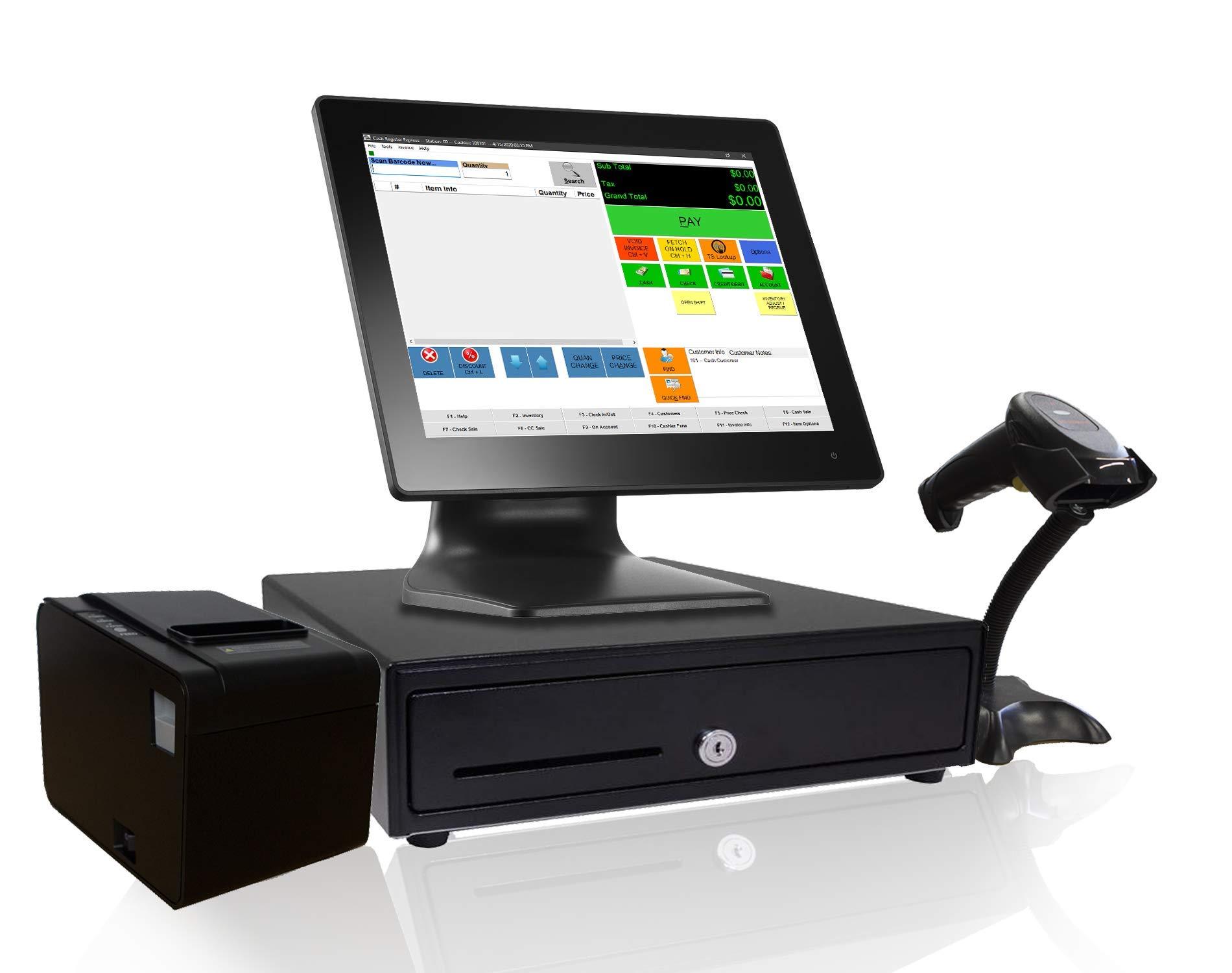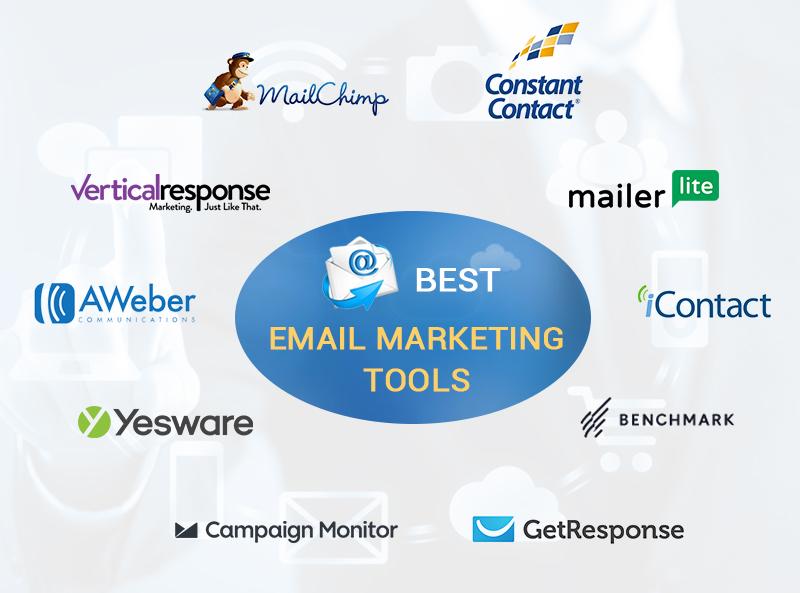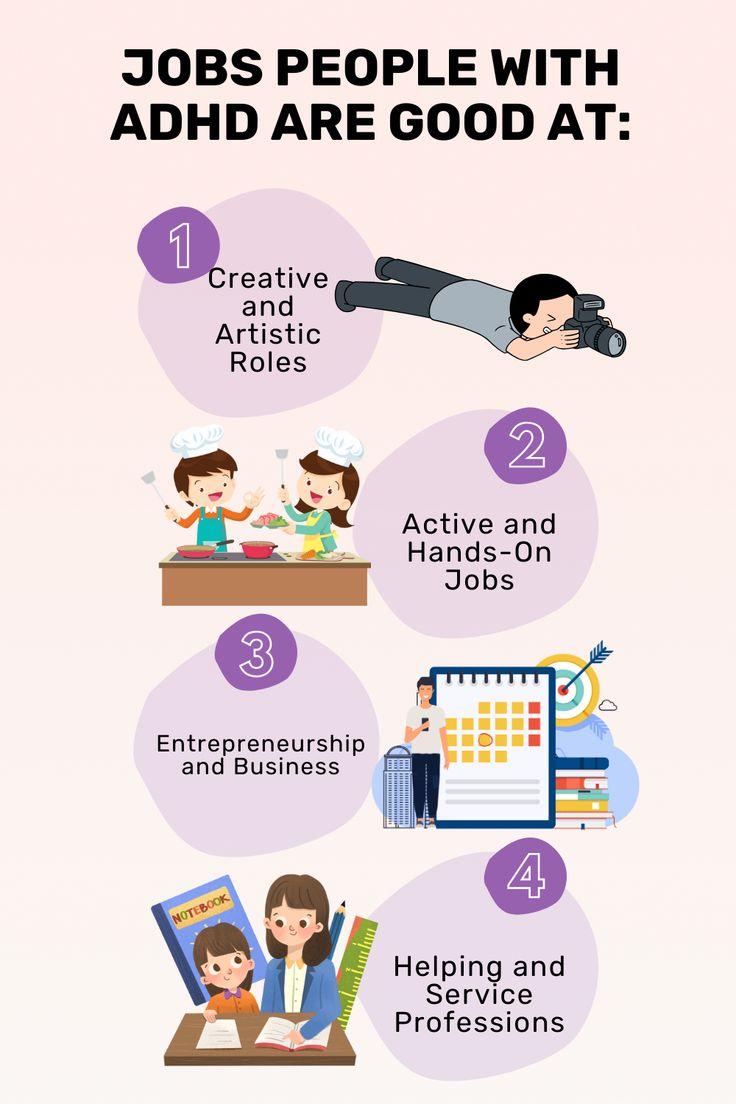
Introduction: Unlocking the Secrets to Amazon Affiliate Success
Have you ever dreamed of turning your passion for sharing great products into a profitable side hustle? If so, you’re in the right place! Becoming an Amazon Affiliate is one of the best ways to monetize your online presence, whether you’re a blogger, a social media influencer, or just someone who loves to recommend awesome finds. Imagine earning commissions every time someone clicks through your link and makes a purchase—sounds enticing, right?
In this article, we’re going to dive deep into the ins and outs of becoming an Amazon Affiliate. We’ll walk you through the entire process, from setting up your account to crafting the perfect content that resonates with your audience. Along the way, we’ll share tips and tricks to help you not just succeed, but to absolutely thrive in the competitive world of affiliate marketing. So, grab your favorite beverage, settle in, and let’s embark on this exciting journey to smashing success together!
How to Get Started with Amazon Affiliate Marketing
Getting started in Amazon affiliate marketing is both exciting and accessible, but it requires a clear roadmap. First, you’ll want to create an Amazon Associates account. This is the foundation of your affiliate marketing journey. Head over to the Amazon Associates homepage and complete the registration process, which typically involves filling out some basic information about yourself and your website or platform.
Once your account is set up, it’s time to dive into the research pool. Understanding your niche is crucial for success. Consider the areas you are passionate about or knowledgeable in, as this will make content creation more enjoyable and authentic. Some popular niches include:
- Technology and Gadgets
- Beauty and Fashion
- Home and Garden
- Health and Wellness
After identifying your niche, focus on building quality content that resonates with your audience. Create blog posts, reviews, or comparison articles that not only inform but also spark interest in the products you plan to promote. Remember, genuine recommendations tend to convert better, so choose products you believe in.
Next, you’ll want to implement your affiliate links strategically. Use Amazon’s tools to generate links for the products you’ve chosen to promote. Here are some effective ways to incorporate these links:
- Embed them within relevant blog content
- Use compelling call-to-action buttons
- Include links in email newsletters
Another vital aspect is tracking your performance. Utilize Amazon’s reporting tools to analyze which products are getting clicks and converting into sales. This data is invaluable for refining your strategy over time. You can improve your content based on what resonates with your audience by identifying the top-performing items.
Consider diversifying your marketing efforts. Social media platforms, such as Instagram, Pinterest, and YouTube, can help you expand your reach and attract more potential buyers. Tailor your content for each platform—visuals work well on Instagram, while detailed product reviews might shine on YouTube.
don’t underestimate the power of SEO. Optimize your content using relevant keywords that your target audience is searching for. This can dramatically increase your visibility on search engines. Tools like Google Keyword Planner or Ubersuggest can help you find the right keywords to weave into your articles.
To summarize, here’s a quick reference table to guide your initial steps:
| Step | Action |
|---|---|
| Create Account | Set up your Amazon Associates account. |
| Research Niche | Identify your target audience and niche. |
| Create Content | Write engaging content with genuine product recommendations. |
| Use Links | Embed affiliate links effectively in your content. |
| Track Performance | Analyze data to refine your strategy. |
By following these steps, you’re well on your way to launching your Amazon affiliate marketing journey, creating an engaging experience for your audience, and ultimately achieving success.
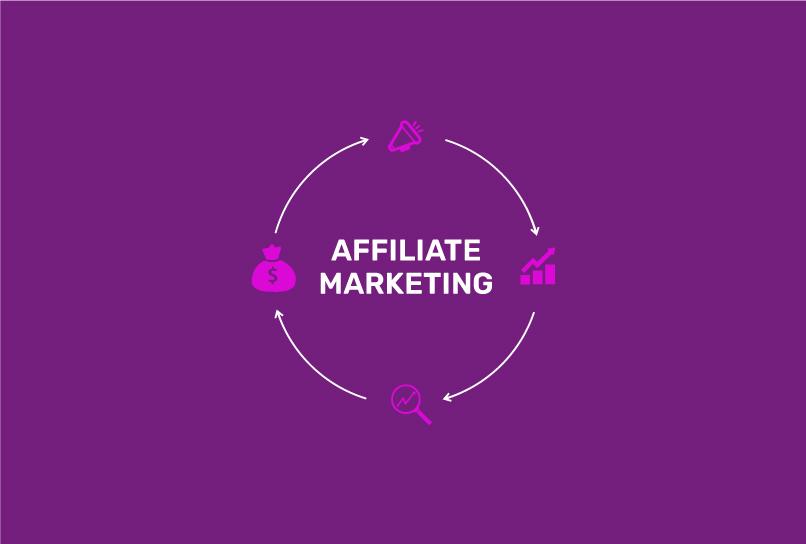
Understanding the Basics of Affiliate Marketing
Affiliate marketing is a powerful way to earn passive income by promoting products and services you love. At its core, it involves partnering with a company to drive sales through your unique referral links. When someone makes a purchase through your link, you earn a commission! Here’s how to effectively navigate the basics:
- Choose Your Niche: Focus on a specific area that you are passionate about. This could be anything from tech gadgets to beauty products. A well-defined niche helps you target the right audience.
- Understand Your Audience: Know who you are speaking to. What are their needs, desires, and pain points? Tailoring your content to meet your audience’s interests will lead to higher conversion rates.
- Join Affiliate Programs: After identifying your niche, join relevant affiliate programs. Amazon Associates is a popular choice due to its extensive product range and trusted reputation.
Once you’ve signed up for an affiliate program, it’s crucial to create engaging content that resonates with your audience. Here are some effective strategies:
- Product Reviews: Write honest and detailed reviews about the products you promote. Include your personal experiences and how the product has benefited you.
- How-to Guides: Create informative guides that incorporate affiliate products. For example, if you’re in the cooking niche, you could include kitchen gadgets or cookbooks in your tutorial.
- Comparison Posts: Help your audience make informed decisions by comparing similar products. Highlight the pros and cons of each item to guide their choices.
To maximize your success, consider the following best practices:
- SEO Optimization: Optimize your content for search engines to increase visibility. Use relevant keywords and phrases that your target audience is searching for.
- Build Trust: Authenticity is key in affiliate marketing. Always disclose your affiliate relationships and only promote products you truly believe in.
- Leverage Social Media: Share your content on social media platforms to reach a wider audience. Engaging posts can drive traffic to your affiliate links.
Additionally, tracking your performance is essential for growth. Here’s a simple overview of what to monitor:
| Metric | Description |
|---|---|
| Click-Through Rate (CTR) | Percentage of people who clicked your affiliate link compared to total views. |
| Conversion Rate | Percentage of clicks that resulted in a sale. |
| Earnings Per Click (EPC) | Average earnings generated per click on your affiliate links. |
With these fundamentals, you’re well on your way to becoming a successful affiliate marketer. Focus on creating valuable content, understanding your audience, and building meaningful relationships. With time, effort, and the right strategies, your affiliate marketing journey can turn into a lucrative endeavor!
Choosing the Right Niche for Your Amazon Affiliate Journey
Choosing the right niche is crucial for your success in the Amazon Affiliate program. A well-defined niche can significantly enhance your ability to attract and engage your target audience. Here are some factors to consider when selecting the perfect niche for your affiliate journey:
- Passion and Interest: Opt for a niche that you are genuinely passionate about. This enthusiasm will keep you motivated and help you create compelling content.
- Market Demand: Research potential niches to see if there’s a healthy demand for products. Tools such as Google Trends or Amazon Best Sellers can provide valuable insights.
- Competition Analysis: While competition is a sign of a profitable niche, you don’t want to dive into an overly saturated market. Look for areas where you can offer unique value.
- Profitability: Evaluate the commission rates for different categories. Some niches may have higher profit margins, which can lead to greater revenue over time.
- Longevity: Choose a niche that is not a passing trend. Think about the long-term potential of the products associated with your niche.
Once you’ve narrowed down your options, conduct a more in-depth analysis. Consider creating a simple comparison table to help visualize your choices:
| Niche | Passion Level (1-10) | Market Demand | Competition Level | Commission Rate |
|---|---|---|---|---|
| Fitness and Health | 9 | High | Medium | 7% |
| Personal Finance | 7 | High | High | 5% |
| Home Improvement | 8 | Medium | Medium | 6% |
| Technology Gadgets | 10 | High | High | 4% |
After establishing your niche, dive deeper into understanding your audience. Identify their pain points, preferences, and buying behaviors. Utilize social media platforms, forums, and surveys to gather insights into what drives your audience’s purchasing decisions. This knowledge will empower you to tailor your content and product recommendations effectively.
Don’t be afraid to pivot if your initial choice doesn’t yield the expected results. Continuously monitor your performance metrics, and be willing to adapt your strategy. The beauty of affiliate marketing is its flexibility; you can explore multiple niches or refine your focus as you learn more about your audience and their needs.
Ultimately, the right niche is one that aligns with your interests, meets market demand, and offers a unique angle. Take your time to research and analyze your options, as this foundational step will set you on a path toward achieving smashing success in your Amazon affiliate journey.
Setting Up Your Amazon Affiliate Account
Getting started with your Amazon Affiliate account is a straightforward process that can open the door to a world of earning potential. To begin, head over to the Amazon Associates homepage and click on the “Join Now for Free” button. This will redirect you to the registration page where you’ll need to input some essential information.
Here’s what you’ll need to provide during the registration:
- Your account information: This includes your name, address, and contact details.
- Your website or mobile app: You’ll need to list the platforms where you plan to promote Amazon products. If you don’t have a website yet, consider creating a simple blog or social media account.
- Payment and tax information: To ensure you get paid for your efforts, Amazon will request your tax details and preferred payment method.
Once you submit your application, you’ll receive an email confirmation. Amazon typically reviews your account within a few hours to a couple of days. During this waiting period, you can get a head start by planning your content strategy and selecting the products you want to promote.
After your application is approved, it’s time to dive into the fun part—creating links! The Amazon Associates dashboard provides various tools to generate affiliate links for products. You can create links through:
- Product Links: Direct links to specific items.
- Image Links: Visually appealing links that showcase products.
- Banners: Pre-made promotional banners for seasonal and special offers.
Make sure to use these tools to enhance your content. High-quality images and clever product placements can significantly boost your conversion rates. Keep in mind that your audience is more likely to click on links that seamlessly integrate with your content.
To maximize your success, it’s essential to understand Amazon’s operating rules. Familiarize yourself with their operating agreement and guidelines. Violating these rules can lead to account termination, so stay informed!
consider using tracking tools to monitor your performance. Amazon provides reports that show which products are generating clicks and commissions. Analyzing this data will help you refine your strategies and focus on what works best for your audience.

Creating a High-Quality Website or Blog
Building a successful website or blog is crucial for your journey as an Amazon Affiliate. It’s not just about having a presence online; it’s about making that presence count. Here are some key elements to consider:
- User-Friendly Design: Ensure your site is easy to navigate. A clean layout, intuitive menus, and a mobile-responsive design can enhance user experience significantly.
- Engaging Content: Your blog posts should provide value. Write informative articles, reviews, and guides that resonate with your audience’s needs.
- SEO Optimization: Use relevant keywords, meta tags, and alt text for images. This will not only help your site rank better on search engines but also attract more visitors.
- Fast Loading Speed: Optimize images and reduce scripts to make sure your site loads quickly. A delay of even a few seconds can drive potential customers away.
- High-Quality Images: Invest in high-resolution images or graphics to make your blog visually appealing. This is especially important for product reviews.
Additionally, consider implementing a blog schedule. Regularly updating your site with fresh content keeps your audience engaged and encourages repeat visits. You could use a simple table to plan your content calendar, like this:
| Week | Blog Post Topic | Status |
|---|---|---|
| 1 | Top 10 Gadgets to Buy on Amazon | Planned |
| 2 | How to Choose the Best Kitchen Appliances | In Progress |
| 3 | A Complete Guide to Amazon Prime Benefits | Completed |
| 4 | Best Practices for Shopping on Amazon | Planned |
Don’t underestimate the power of community. Engage with your audience through comments, social media, and newsletters. Building a loyal following can turn your readers into dedicated customers.
Lastly, track your performance using analytics tools. Understanding which content drives traffic and conversions will help you refine your strategy and make informed decisions for future posts.

Crafting Compelling Content That Converts
When it comes to becoming a successful Amazon Affiliate, the key lies in your ability to create content that not only attracts readers but also drives them to take action. Your goal is to convert casual visitors into loyal customers, and this begins with understanding what your audience needs and desires. Here are some essential strategies to elevate your content and maximize your conversion rates.
First and foremost, know your audience. Spend time researching their preferences, pain points, and buying behaviors. This will allow you to tailor your content specifically to them. Use tools like Google Analytics, social media insights, and keyword research to gather valuable data. Once you have this information, you can create content that resonates with your readers on a personal level.
Next, focus on creating compelling headlines. A great headline grabs attention and encourages clicks. Use powerful words, numbers, and questions to pique curiosity. For example, instead of saying “Top Kitchen Gadgets,” try “10 Kitchen Gadgets That Will Revolutionize Your Cooking.” This not only informs the reader but also hints at the value they will gain from your post.
Additionally, storytelling is a potent tool. Weave personal anecdotes or relatable scenarios into your content to engage readers emotionally. This creates a connection, making them more likely to trust your recommendations. For instance, if you’re promoting a kitchen appliance, share a story about how it made your cooking experience easier or more enjoyable.
Don’t forget the importance of visuals. Incorporate high-quality images, infographics, or videos that complement your text. Visuals not only break the monotony of text-heavy content but also help to illustrate your points effectively. Remember, a picture is worth a thousand words, especially when it comes to product recommendations.
When writing product reviews or recommendations, always focus on the benefits rather than just the features. Readers want to know how a product can improve their lives. Instead of listing specifications, explain how the product solves a problem or enhances their experience. Use bullet points for clarity:
- Easy to use: Save time with intuitive controls.
- Durable: Long-lasting materials ensure you get more bang for your buck.
- Versatile: Perfect for various tasks, making it a great investment.
Lastly, always include a strong call to action (CTA). Encourage your readers to click on your affiliate links by highlighting exclusive deals, discounts, or limited-time offers. Make your CTA clear and compelling. Here are a few examples:
- “Grab yours now and enjoy a 20% discount!”
- “Don’t miss out—click here to discover more!”
- “Join thousands of satisfied customers today!”
By employing these strategies, you can craft content that not only engages but also converts. The more you connect with your audience through tailored, compelling, and visually appealing content, the more likely they are to act on your recommendations. Remember, the ultimate goal is not just to inform but to inspire action—so get writing!

Leveraging Social Media to Drive Traffic
In today’s digital landscape, social media serves as a powerful tool for affiliate marketers looking to drive traffic to their Amazon affiliate links. By leveraging these platforms effectively, you can reach a vast audience and convert engaged users into potential buyers. Here are some strategies to consider:
- Identify Your Target Audience: Understanding who your audience is will help tailor your content to meet their needs. Are they tech enthusiasts? Fashion lovers? Home improvement aficionados? Knowing your niche allows you to create targeted posts that resonate.
- Choose the Right Platforms: Not all social media channels are created equal. Consider where your target audience spends their time. Instagram is great for visual products, while Twitter can help you share quick updates and links. Facebook offers community engagement through groups, and Pinterest is perfect for driving traffic to blogs.
- Create Engaging Content: Use eye-catching visuals and compelling captions. High-quality images or videos of the products you’re promoting are essential. Pair these with engaging storytelling that highlights how these products can solve problems or enhance the user’s lifestyle.
- Utilize Hashtags Wisely: Hashtags increase the visibility of your posts. Research popular hashtags related to your niche and include them in your posts. However, don’t overdo it; a few relevant hashtags can be more effective than a long list.
- Engage with Your Audience: Social media is a two-way street. Respond to comments, answer questions, and solicit feedback. Creating a dialogue can foster trust and encourage users to click through your links.
To further boost your social media impact, consider implementing these additional tactics:
| Strategy | Description |
|---|---|
| Collaborate with Influencers | Partnering with influencers in your niche can expose your affiliate links to a larger audience. Choose influencers whose values align with your brand for authentic promotion. |
| Run Contests or Giveaways | Encourage user participation by hosting contests. Ask participants to share your posts or tag friends to increase visibility and engagement. |
| Use Stories and Live Videos | Engage your audience in real-time. Use platforms like Instagram Stories or Facebook Live to showcase products and offer exclusive promotions. |
Tracking your efforts is crucial to understanding what works. Utilize the analytics tools provided by each platform to monitor which posts drive the most traffic and engagement. This data not only helps refine your strategy but also guides future content creation.
remember that consistency is key. Regular posting keeps your audience engaged and helps maintain visibility in crowded feeds. Create a content calendar to plan your posts, ensuring a steady stream of valuable content that keeps your followers coming back for more.

Utilizing SEO Strategies to Boost Visibility
When diving into the world of Amazon Affiliates, maximizing your visibility should be a top priority. To stand out in a crowded marketplace, it’s essential to leverage effective SEO strategies that not only attract traffic but also convert visitors into buyers. Here are some key tactics to consider:
- Keyword Research: Begin by identifying the right keywords that your target audience is searching for. Tools like Google Keyword Planner or SEMrush can help you find relevant terms with good search volume and lower competition.
- On-Page SEO Optimization: Ensure that your content is optimized for the selected keywords. This includes using them in titles, headings, and throughout your content naturally. Don’t forget to optimize your meta descriptions and alt text for images!
- Create High-Quality Content: Content is king in the realm of SEO. Focus on producing engaging, informative, and valuable content that addresses your audience’s needs. This could be product reviews, how-to guides, or comparison articles that help potential buyers make informed decisions.
- Utilize Internal Linking: Enhance user experience and boost SEO by linking to other relevant posts within your site. This not only helps in keeping visitors on your site longer but also spreads link equity across your pages.
Another crucial element is your site’s architecture. A well-organized website structure not only helps users navigate easily but also helps search engines index your pages effectively.
| SEO Strategy | Benefits |
|---|---|
| Keyword Research | Identifies what users are searching for. |
| On-Page Optimization | Improves rankings and click-through rates. |
| Quality Content Creation | Engages visitors and builds authority. |
| Internal Linking | Keeps users on-site and improves navigation. |
Don’t forget about the power of backlinks. Building quality backlinks from reputable websites can significantly enhance your site’s authority. Reach out to bloggers or influencers in your niche for guest posting opportunities or collaborations.
monitor your analytics to track your progress. Use tools like Google Analytics to see which strategies are driving traffic and conversions. This data allows you to adjust your tactics, ensuring that you’re always improving your visibility and success rate.

Building an Engaging Email List for Affiliate Promotions
Building an email list is one of the most powerful strategies for maximizing your success as an Amazon affiliate. Unlike social media platforms where algorithms dictate your reach, an email list gives you direct access to your audience. Here’s how to create an engaging email list that not only drives traffic to your affiliate links but also nurtures a loyal community around your brand.
First things first, offer value. People are more likely to subscribe to your email list if they see a clear benefit. Consider offering:
- Exclusive content: Share insights, tips, and tricks that aren’t available elsewhere.
- Free resources: Ebooks, checklists, or templates related to your niche can entice users to subscribe.
- Discounts and promotions: Providing subscribers with special deals can incentivize sign-ups.
Next, focus on creating engaging lead magnets. A lead magnet is something you offer in exchange for a visitor’s email address. Here are a few ideas:
- Product reviews: In-depth reviews of popular Amazon products can attract potential buyers.
- Guides and tutorials: Create a comprehensive guide that solves common problems in your niche.
- Webinars and live Q&As: Invite subscribers to exclusive events that help them understand your products better.
Ensure your email sign-up forms are prominently placed on your website. Here are a few effective strategies:
- Position sign-up forms in the sidebar or footer of your website.
- Use pop-ups that appear after a visitor spends a certain amount of time on your site.
- Include a sign-up link in your blog posts to capture readers’ interest when they’re engaged.
Once you have subscribers, the content of your emails is crucial. Aim to maintain a balance between promotional content and valuable information. A simple structure to follow could be:
| Email Content Type | Purpose |
|---|---|
| Product Recommendations | Highlight affiliate products with reviews and links. |
| Helpful Articles | Engage your audience with informative content. |
| Personal Stories | Build trust and relatability with subscribers. |
| Exclusive Offers | Encourage immediate action through limited-time deals. |
don’t forget to actively engage with your audience. Encourage feedback, respond to queries, and invite them to share their thoughts on products you recommend. This not only builds loyalty but also fosters a sense of community that can be powerful for conversions. Remember, your email list isn’t just a tool for promotion; it’s a channel for building relationships.
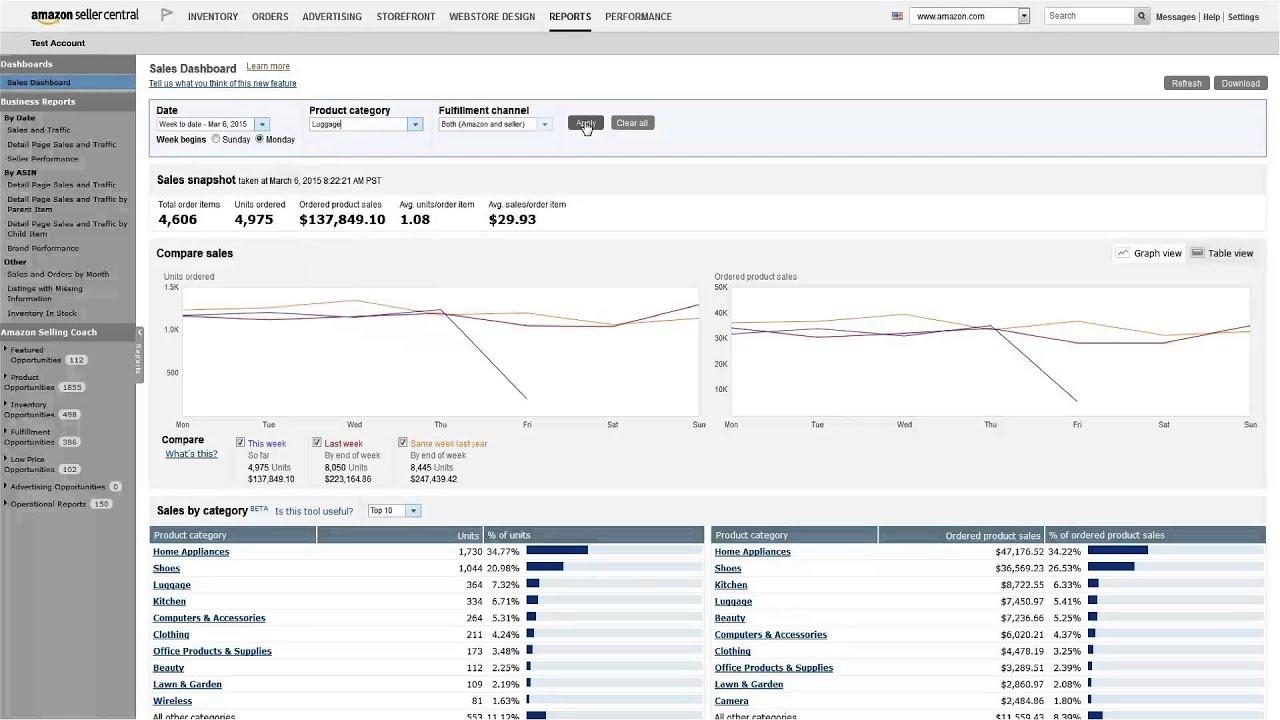
Analyzing Your Performance with Amazon Reports
To truly elevate your Amazon affiliate game, diving into the analytics provided by Amazon reports is essential. These reports offer invaluable insights into how your affiliate links are performing, helping you to track your success and identify areas ripe for improvement. Understanding your performance metrics can be the difference between a mediocre campaign and one that flourishes.
First, familiarize yourself with the different types of reports available:
- Traffic Reports: These show you the number of clicks you’ve received on your affiliate links, which is crucial for understanding your reach.
- Conversion Reports: These reports detail how many of those clicks resulted in actual purchases, giving you a clear picture of your conversion rates.
- Earnings Reports: Here, you’ll see how much money you’ve made from your affiliate links, allowing you to assess your profitability.
- Order Reports: These provide insights into the products that are being purchased through your links, helping you to identify which items are most popular.
Once you’ve accessed these reports, it’s time to analyze the data. Start by focusing on your traffic and conversion rates. If you notice a high number of clicks but low conversions, it’s an indication that you might need to refine your content or the products you’re promoting. Consider these questions:
- Are the products relevant to your audience?
- Is the content engaging and persuasive enough to encourage purchases?
- Are you effectively utilizing calls-to-action?
Next, pay attention to your earnings reports. If certain products are generating significant income while others are not, it may be worth exploring why some items resonate more with your audience. Create a simple comparison table to outline this:
| Product | Clicks | Conversions | Earnings |
|---|---|---|---|
| Product A | 500 | 50 | $250 |
| Product B | 300 | 15 | $75 |
| Product C | 700 | 100 | $500 |
This table allows you to see at a glance which products are performing well and which aren’t. If you find that a particular product consistently leads to high earnings, it may be beneficial to create more content around that product or similar items.
don’t forget to leverage the data to tweak your strategies. A/B testing different types of content, promotional strategies, and even varying the placement of your affiliate links can yield significant results. Use the insights from your reports to steer your content creation process, ensuring that you are aligning your promotional efforts with what the data tells you.
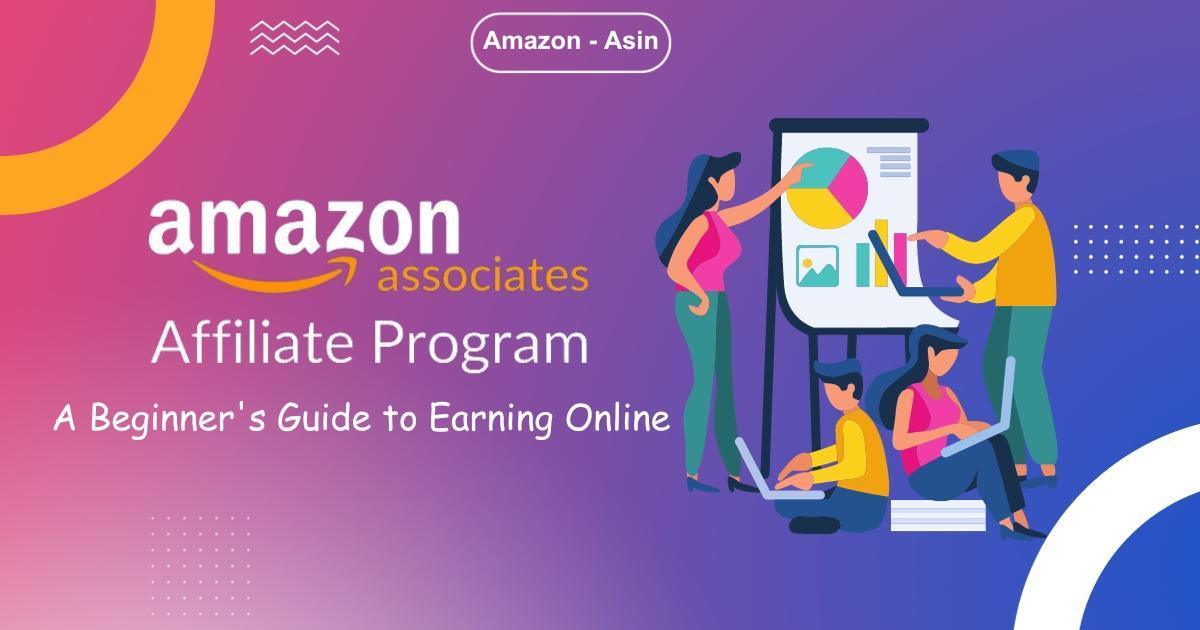
Staying Compliant with Amazons Affiliate Guidelines
Becoming an Amazon Affiliate opens up a world of opportunities, but it’s crucial to adhere to their guidelines to ensure a smooth and successful journey. Let’s dive into what you need to know to stay compliant and keep your affiliate status secure.
First and foremost, transparency is key. Always be honest with your audience about your affiliate relationships. This means:
- Clearly disclosing that you may earn a commission if they buy through your links.
- Using straightforward language to explain affiliate links and their purpose.
Another critical aspect is the content you produce. Amazon is particularly strict about how their affiliate program is marketed. When creating content, ensure that:
- Your reviews and recommendations are genuine and reflect your true opinion.
- You do not exaggerate the benefits of products or make false claims.
When promoting products, it’s essential to use the correct links provided by Amazon. This means:
- Utilizing the official Amazon Associates SiteStripe tool to generate links.
- Avoiding the use of shortened or modified links that could obscure the source.
Moreover, steer clear of certain practices that could jeopardize your affiliate status:
- Do not use your affiliate links in unsolicited emails or spam.
- Refrain from advertising Amazon products through paid search advertising.
A table summarizing the main points to remember can help you keep compliance top of mind:
| Guideline | What to Do | What to Avoid |
|---|---|---|
| Transparency | Disclose affiliate links | Hide affiliate relationships |
| Content Authenticity | Provide genuine reviews | Make false claims |
| Link Management | Use Amazon-generated links | Modify links |
| Marketing Methods | Promote through own content | Use spam or unsolicited emails |
always keep yourself updated with any changes Amazon may make to their affiliate guidelines. Following their blog and community forums can provide insights and help you adapt quickly. By staying informed and compliant, you not only protect your affiliate status but also build trust with your audience, paving the way for sustained success.
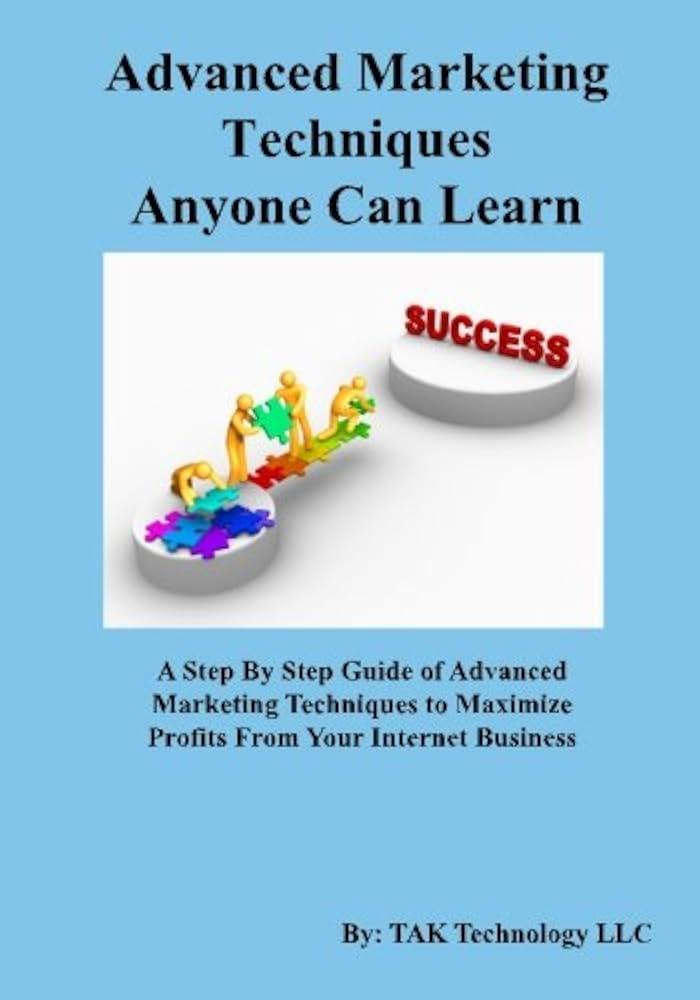
Scaling Your Success with Advanced Marketing Techniques
To truly harness the power of being an Amazon Affiliate, it’s essential to dive into a range of marketing techniques that can elevate your success. Here are some advanced strategies to consider:
- Content Marketing: Create high-quality, engaging content that resonates with your audience. Whether it’s blog posts, product reviews, or how-to guides, focus on delivering value. Use SEO techniques to boost visibility, making sure to incorporate relevant keywords that your audience searches for.
- Email Marketing: Build a mailing list of potential customers. Send newsletters featuring top Amazon deals, product recommendations, or exclusive offers. Personalize your emails to make your audience feel valued and connected.
- Social Media Marketing: Leverage platforms like Instagram, Facebook, and Pinterest to share your affiliate links. Craft visually appealing posts that showcase products in action. Utilize stories and reels to create buzz around special promotions or new arrivals.
- Video Marketing: Create engaging video content that showcases products. You can unbox items, provide tutorials, or give honest reviews. Platforms like YouTube allow you to incorporate your affiliate links directly, driving traffic and conversions effectively.
Another crucial aspect of scaling your success is understanding your audience. By analyzing the preferences and behaviors of your target market, you can tailor your strategies to meet their needs. Utilize tools like Google Analytics to track user engagement and identify which products or content generate the most interest.
Consider collaborating with influencers in your niche. Partnering with individuals who already have a loyal following can give your affiliate marketing efforts a significant boost. Here’s how to approach it:
- Identify influencers whose brand aligns with yours.
- Reach out with a personalized message explaining the benefits of your partnership.
- Offer exclusive deals or affiliate commissions to incentivize their promotion.
Utilizing paid advertising can also be a game-changer. Platforms like Facebook Ads and Google Ads allow you to target specific demographics, ensuring your affiliate products reach the right audience. Here’s a simple breakdown of how to get started:
| Platform | Advantages | Tips |
|---|---|---|
| Facebook Ads | Target demographics, retargeting options | Start with a small budget; test different ad creatives |
| Google Ads | Reach users actively searching for products | Use long-tail keywords for better targeting |
Lastly, always be testing and iterating on your strategies. Track your performance metrics and adapt your approach based on what works best. A/B testing different headlines, calls to action, and even product placements can provide valuable insights that lead to improved conversion rates.
By adopting these advanced marketing techniques, you’re not just setting up for a one-time success; you’re building a sustainable affiliate marketing business that can grow and evolve with the changing marketplace. The more you invest in understanding your audience and refining your tactics, the closer you’ll get to smashing your affiliate goals!

Common Pitfalls to Avoid on Your Amazon Affiliate Journey
Embarking on your journey as an Amazon affiliate can be exciting and lucrative, but there are several pitfalls that can hinder your success. Awareness and preparation are key to avoiding these common traps. Here’s what to watch out for:
- Ignoring Your Niche: Diving into the Amazon affiliate program without a clear niche can dilute your efforts. Focus on a specific area where you can establish expertise and build trust with your audience.
- Neglecting Quality Content: Content is king. Create valuable, engaging, and informative content that resonates with your audience. Avoid the temptation to churn out low-quality articles just for the sake of filling your site.
- Overlooking SEO: Search engine optimization is crucial for driving traffic to your site. Conduct keyword research and implement on-page SEO practices to boost your visibility on search engines.
- Failure to Track Performance: Not monitoring your affiliate performance can lead to missed opportunities for improvement. Utilize tools and analytics to keep tabs on your clicks, conversions, and earnings.
- Choosing the Wrong Products: Don’t just promote any product; choose those that align with your audience’s interests and needs. Research products thoroughly to ensure they are of high quality and have positive reviews.
Another common mistake is overlooking the importance of building an email list. An email list allows you to engage directly with your audience, offering personalized recommendations and building a loyal following. Here’s a quick comparison of the benefits:
| Benefit | Email List | Social Media |
|---|---|---|
| Direct Communication | ✅ | ❌ |
| Ownership of Audience | ✅ | ❌ |
| Higher Conversion Rates | ✅ | ❌ |
| Long-term Relationships | ✅ | ❌ |
Lastly, be wary of spending too much time on promotion and too little on building relationships. Engaging with your audience through comments, social media, and forums can establish credibility and build a community around your content. Connecting with fellow affiliates and influencers can also open doors to collaborations that enhance your reach.
By steering clear of these common pitfalls, you’ll set a strong foundation for your Amazon affiliate journey. Focus on building valuable content, understanding your audience, and continuously evolving your strategy, and success will surely follow.

Celebrating Your Wins and Planning for Future Growth
As you embark on your journey as an Amazon Affiliate, it’s essential to take a moment to celebrate your victories, no matter how small. Each sale you make is a reflection of your hard work and dedication. Acknowledge these achievements by tracking your milestones:
- First Sale: Celebrate that initial commission; it’s a sign that your strategies are working!
- Consistent Sales: If you’ve reached a steady income stream, give yourself a pat on the back.
- Traffic Growth: Increased visitor numbers mean your promotions are resonating with your audience.
- Engagement Rates: If your content is being shared and liked, you’re creating valuable connections.
After celebrating your successes, it’s time to shift focus toward future growth. Consider these strategies to elevate your Amazon Affiliate game:
- Expand Your Niche: Explore related niches that can complement your existing content.
- Invest in Learning: Stay updated with the latest trends and tools in affiliate marketing.
- Build a Community: Engage with your audience through social media; create a sense of belonging.
- Optimize Your Content: Regularly refresh your existing posts to keep them relevant and engaging.
To visualize your growth, it can be helpful to keep a simple table of your monthly earnings and goals. Here’s a template you can use:
| Month | Earnings | Goals for Next Month |
|---|---|---|
| January | $150 | Increase traffic by 20% |
| February | $200 | Launch a new product review |
| March | $250 | Engage on social media more actively |
With each milestone you reach, remember to reassess your affiliate marketing strategies. Look at what’s working, and don’t shy away from experimenting with new tactics. Your adaptability will be key to sustaining your growth in this dynamic environment.
Lastly, surround yourself with a network of fellow affiliates. Sharing experiences, tips, and insights can be invaluable as you navigate this journey together. Celebrate each other’s wins and strategize collectively to keep pushing toward your goals.
Frequently Asked Questions (FAQ)
Q&A: How to Become an Amazon Affiliate & Achieve Smashing Success
Q: What is the Amazon Affiliate program?
A: The Amazon Affiliate program, also known as Amazon Associates, is a fantastic opportunity for individuals or businesses to earn a commission by promoting Amazon products. Basically, you share unique affiliate links to products on Amazon, and when someone makes a purchase through your link, you earn a percentage of the sale. It’s a win-win situation!
Q: How do I get started with the Amazon Affiliate program?
A: Getting started is simple! First, visit the Amazon Associates website and sign up for an account. You’ll need to provide some basic information about yourself and how you plan to promote the products. Once registered, you can start creating affiliate links for products you wish to promote.
Q: Do I need a website to become an Amazon Affiliate?
A: While having a website or blog can significantly boost your chances of success, it’s not a strict requirement. You can also share your affiliate links through social media platforms, YouTube, or even email newsletters. However, having a dedicated platform allows for more content creation and better engagement with your audience.
Q: What kind of products should I promote?
A: Choose products that resonate with your audience and align with your niche. For example, if you have a tech-focused blog, promoting gadgets and electronics would make sense. It’s all about authenticity—your audience will trust your recommendations more if you genuinely believe in the products.
Q: How can I increase my chances of making sales?
A: Great question! Here are some tips: 1) Create high-quality content that provides value—think reviews, how-tos, and comparisons. 2) Use eye-catching visuals to draw attention to your affiliate links. 3) Be transparent about your affiliate relationships—it builds trust with your audience. 4) Utilize SEO techniques to boost your visibility in search engines.
Q: How much can I earn as an Amazon Affiliate?
A: Earnings can vary widely based on factors like your niche, traffic, and how effectively you promote your links. On average, Amazon pays between 1% to 10% commission, depending on the product category. While it may take some time to build momentum, successful affiliates can earn a substantial income over time.
Q: Are there any common mistakes to avoid?
A: Definitely! Here are a few pitfalls to watch out for: 1) Not reading Amazon’s Operating Agreement and policies—violating them can get you banned. 2) Relying solely on Amazon for income; diversify your income streams! 3) Not tracking your performance—understanding what works will help you refine your strategies.
Q: How long does it take to see results?
A: Patience is key! Some affiliates start seeing results within a few weeks, while others may take months to build up traffic and conversions. Focus on consistently creating valuable content and engaging with your audience, and the results will come.
Q: Any final tips for achieving success as an Amazon Affiliate?
A: Absolutely! Stay consistent, keep learning, and adapt to your audience’s needs. Utilize analytics to see what content resonates and adjust your strategy accordingly. Most importantly, enjoy the process! The more passionate you are about what you do, the more likely you’ll achieve smashing success.
Ready to dive in? The Amazon Affiliate program could be your ticket to financial freedom!
The Conclusion
And there you have it! You’re now equipped with all the essential tips and strategies to kickstart your journey as an Amazon Affiliate. Remember, the world of affiliate marketing is all about persistence, creativity, and a willingness to learn. The more effort you put into understanding your audience and refining your approach, the greater your chances of achieving smashing success.
So, why wait? Dive in, explore the vast array of products on Amazon, and start crafting content that resonates with your audience. Keep experimenting, stay consistent, and don’t be afraid to adapt your strategies as you go along. With dedication and the right mindset, you could turn your passion into a profitable venture.
If you have any questions or need further guidance, don’t hesitate to reach out. The affiliate marketing community is full of support, and you’ll find plenty of resources to help you along the way. Now, go ahead and take that first step—you’ve got this! Happy affiliating!



